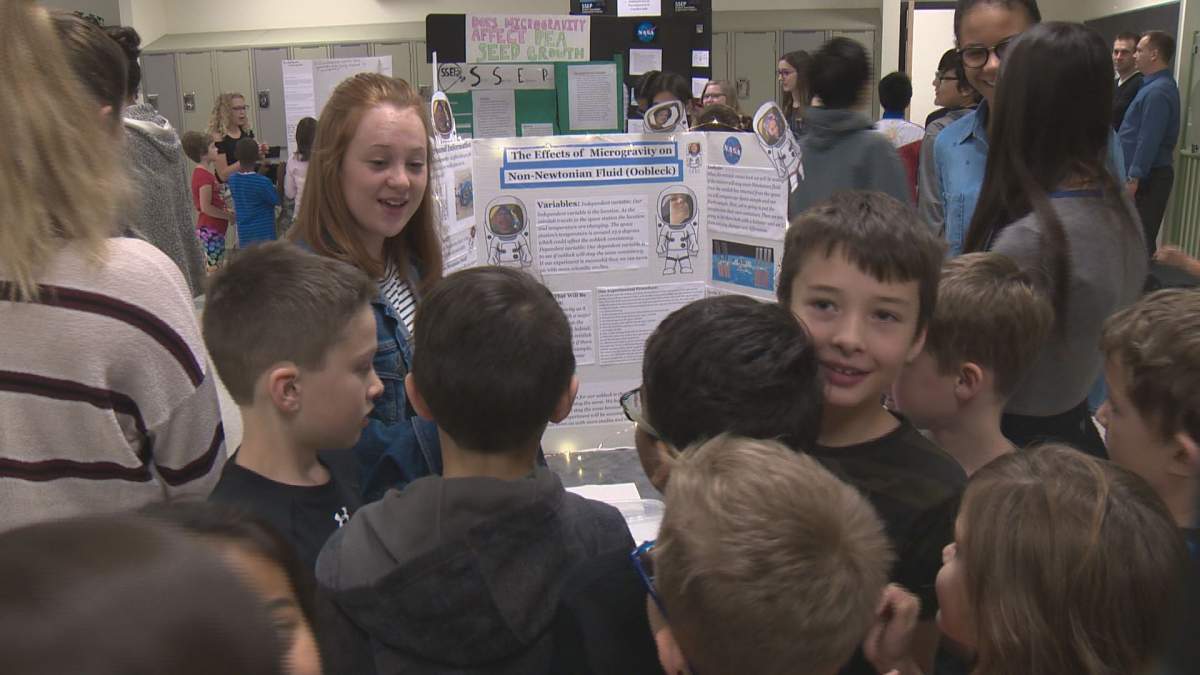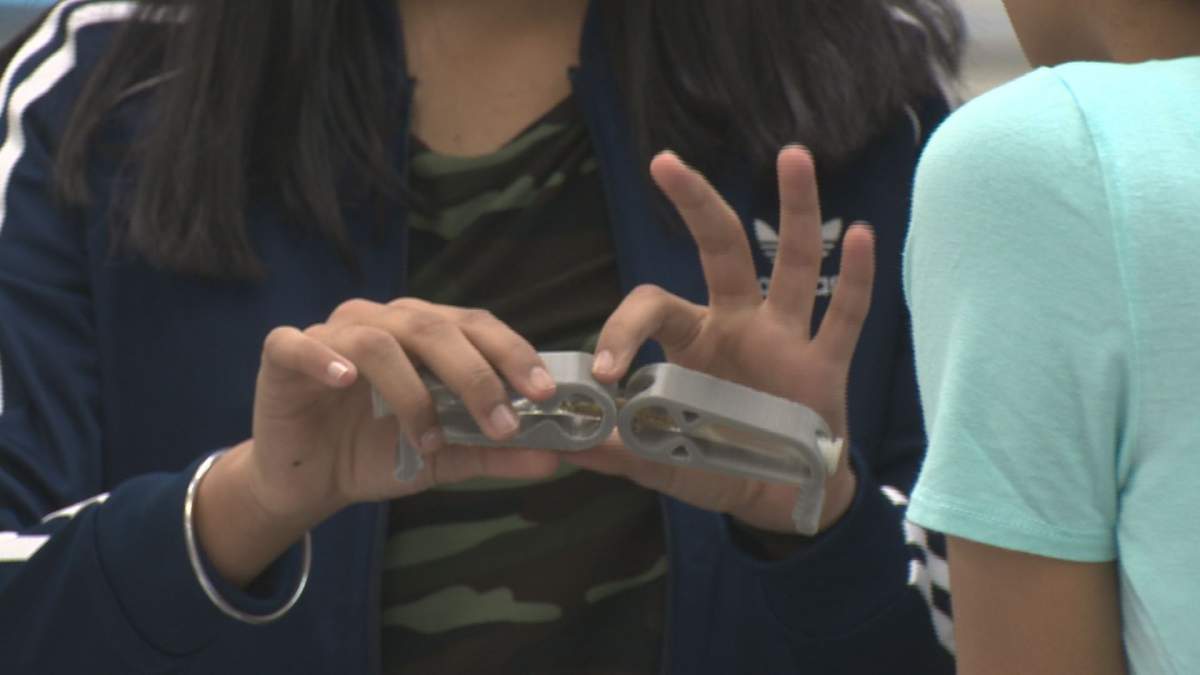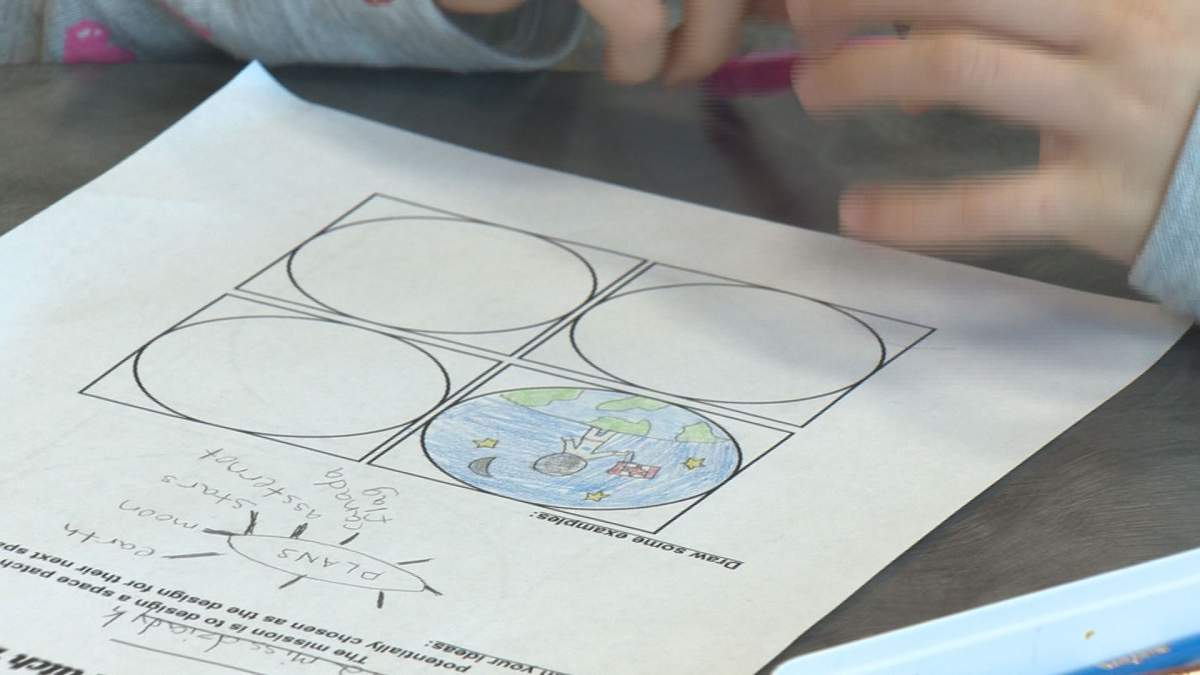Science classes these days sure aren’t what they used to be.

Technology and innovation is at the forefront of Julie Arsenault’s classes at Edmonton’s Michael Strembitsky School, and students there are hoping to take their science projects to new heights.
The kids are taking part in the Student Spaceflight Experiments Program (SSEP), designed to inspire future scientists and engineers by helping to facilitate educational programming around physics and space experimentation in communities across North America.
For the students participating in the competition, getting selected is a big deal. Only one project will be chosen from several dozen Grade 8 student submissions from seventeen different Edmonton schools.
The SSEP expects to see research proposals covering a wide variety of topics, including seed germination, micro-organism life cycles and cell biology in a zero-gravity environment.

Get daily National news
READ MORE: University of Alberta space team receives funding to launch second satellite
Strictly adhering to scientific research methods, the Edmonton students were sent a specialized microgravity mini-laboratory to conduct their earthly research in. Each tube-like lab holds just 10 millilitres of mass, causing students to get creative with their proposals.
“It’s been a really authentic cross-disciplinary effort,” Arsenault said.
“Science is not just about memorizing facts and googling details, which is all really cool, but it’s about understanding how to design an experiment,” she said, noting the winning student will have also written about their experiment in a clear and concise way.
Down the hall at Michael Strembitsky School, the Grade 3 students were also excited for an SSEP competition of their own, though the odds of having their art design turned into a patch worn by a real astronaut are much lower.
“There’s only one person, from one school, from one class that can get it sent into space,” Grade 3 student Meena Sundar explained.
It’s a competition that gets kids thinking big about their schoolwork and their careers.
“We could have a future astronaut on our hands, or maybe a future engineer, or a NASA worker — you just never know,” Grade 3 teacher Kimberley Harris said.
The Edmonton student whose experiment will be sent to space will be selected on Nov. 6.











Comments